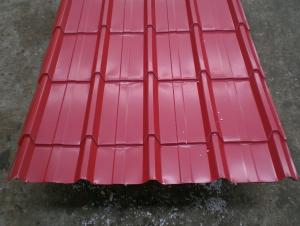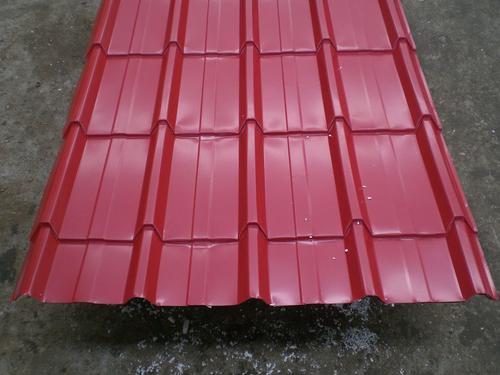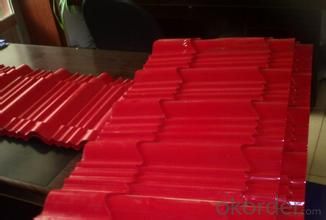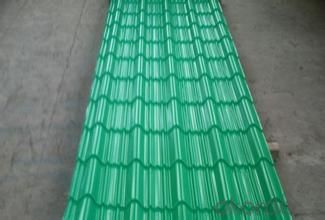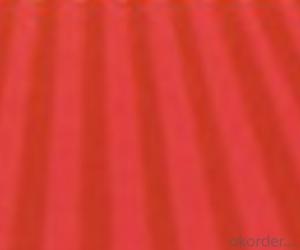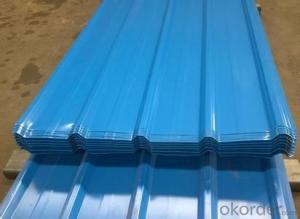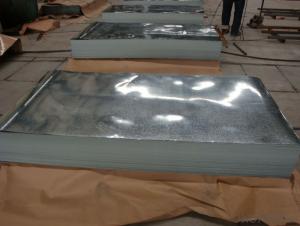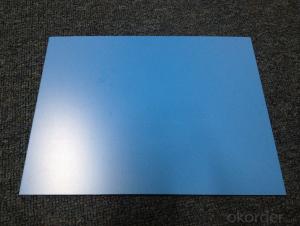Prepainted gavanized steel sheets
- Loading Port:
- China Main Port
- Payment Terms:
- TT OR LC
- Min Order Qty:
- -
- Supply Capability:
- -
OKorder Service Pledge
Quality Product, Order Online Tracking, Timely Delivery
OKorder Financial Service
Credit Rating, Credit Services, Credit Purchasing
You Might Also Like
Specifications
Galvanized steel sheet ( Hot Dip )
Thickness:0.15mm~3.0mm
Width:150mm~1500mm
Material :SGCH, SGCC, DX51D, SPCC etc
- Q: Why can steel HPB300, steel plate without Q300, steel structure manuscript review, but also continued the Q235, why not improve it?
- Carbon steel according to the steel yield strength is divided into 5 grades: Q195, Q215, Q235, Q255 and Q275 of each grade because the quality is divided into A, B, C, D grade, with a maximum of four kinds, some only one; this is just plain carbon steel, the price is cheap, generally not heat treatment. Only quality carbon steel has the value of heat treatment.
- Q: Can steel sheets be used in outdoor applications?
- Yes, steel sheets can be used in outdoor applications. Steel is a highly durable and weather-resistant material, making it suitable for various outdoor purposes such as roofing, siding, fencing, and construction projects. Its strength and resistance to corrosion make it an ideal choice for enduring harsh weather conditions and providing long-lasting performance.
- Q: Can steel sheets be used for elevator shafts?
- Yes, steel sheets can be used for elevator shafts. Steel is a common material choice for elevator shafts due to its strength, durability, and fire resistance properties. It can be fabricated into sheets and used to construct the walls and structure of elevator shafts, providing a safe and reliable transportation system.
- Q: Who knows the wire width of the steel mesh?
- Steel net is diamond, respectively from the left and right (up or down) with two curved metal strips, the two metal strips are generally not the same thickness, the thickness is the stem width, the width is less than the thickness of material.
- Q: Can the steel sheets be used for medical equipment?
- Yes, steel sheets can be used for medical equipment as they offer durability, corrosion resistance, and ease of cleaning, making them suitable for various applications in the medical field.
- Q: Can steel sheets be used in the construction of bridges?
- Indeed, the utilization of steel sheets in the construction of bridges is possible. Due to its numerous beneficial characteristics, steel has become a prevalent material in bridge construction. Owing to their exceptional strength and durability, steel sheets are well-suited for enduring substantial loads and adverse weather conditions. Furthermore, their flexibility facilitates simpler fabrication and installation processes. Moreover, the ease with which steel sheets can be welded or bolted together makes them highly suitable for the construction of expansive structures such as bridges. In conclusion, steel sheets provide a dependable and cost-effective solution for bridge construction.
- Q: Can steel sheets be bent without causing damage?
- Provided that the bending process is carried out with caution and within the material's limits, steel sheets can be bent without sustaining any damage. Various techniques, such as press brake bending or roll bending, are commonly employed to bend steel sheets. These methods involve applying controlled force and pressure to achieve the desired shape without causing any lasting deformations. Several factors influence the ability to bend steel sheets without harm. These factors include the thickness and grade of the steel, the bending radius, and the equipment and technique employed. Thinner sheets are generally more pliable and easier to bend, while thicker sheets may necessitate greater forces and specialized equipment. To ensure that the bending process does not exceed the steel's limits, it is crucial to consider its tensile strength, yield strength, and elongation properties. Over-bending can result in cracks, fractures, or permanent deformations that compromise the sheet's structural integrity. To prevent damage during the bending process, it is vital to follow proper bending techniques and guidelines. This includes using suitable tooling, distributing force evenly, and avoiding abrupt changes in direction or excessive bending angles. Additionally, preheating the steel sheet can enhance its pliability and reduce the risk of damage. In conclusion, steel sheets can be bent without damage, but it necessitates careful consideration of the material's properties, appropriate equipment, and adherence to bending guidelines. By employing the correct techniques and precautions, steel sheets can be successfully bent into various shapes and forms while preserving their structural integrity.
- Q: What welding rod should be used for welding of cast iron and Q235B steel plate?
- Q235B is a kind of low carbon steel commonly used in China, good welding performance, applicable to a variety of welding engineering used J422 (new brand E4303) in order to improve the efficiency of welding, and can also be used CO2 welding, welding wire can be used H08.
- Q: What is the process of annealing steel sheets?
- Annealing steel sheets is a heat treatment process that involves heating the steel sheets to a specific temperature and then slowly cooling them to soften the material and relieve internal stresses. This process helps improve the steel's ductility, machinability, and overall mechanical properties.
- Q: What is the hardness of the steel sheets?
- The hardness of steel sheets can vary depending on the specific grade and treatment of the steel. Steel sheets are typically measured on the Rockwell hardness scale, which measures the resistance of the material to indentation. The hardness of steel sheets can range from relatively soft to extremely hard, depending on factors such as the carbon content, alloying elements, and heat treatment processes used during manufacturing. It is important to consider the intended application and desired properties when selecting steel sheets, as the hardness can affect factors such as wear resistance, strength, and machinability.
Send your message to us
Prepainted gavanized steel sheets
- Loading Port:
- China Main Port
- Payment Terms:
- TT OR LC
- Min Order Qty:
- -
- Supply Capability:
- -
OKorder Service Pledge
Quality Product, Order Online Tracking, Timely Delivery
OKorder Financial Service
Credit Rating, Credit Services, Credit Purchasing
Similar products
Hot products
Hot Searches
Related keywords
